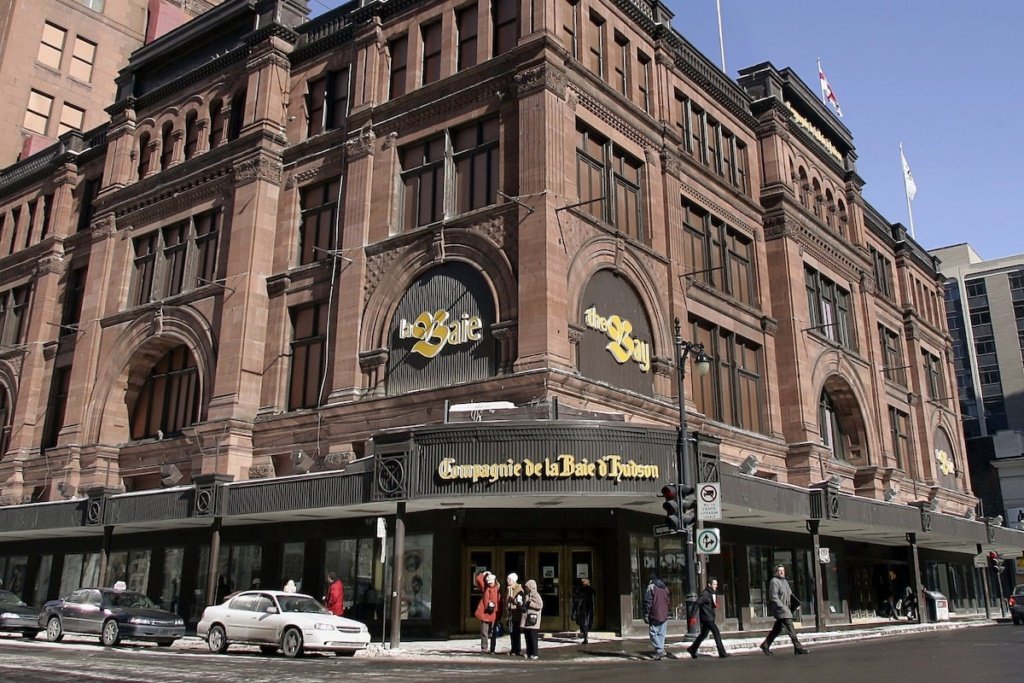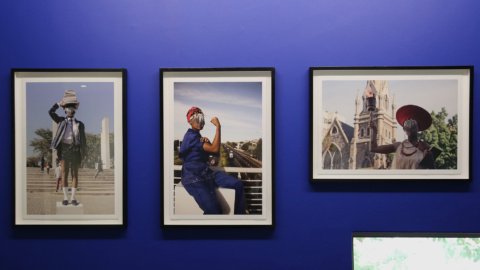The Bay’s flagship store in downtown Montreal in March, 2005. Hudson’s Bay is putting up for auction hundreds of pieces of store memorabilia and other artifacts.RYAN REMIORZ/The Canadian Press
A painting by Winston Churchill is among the art collection of failed retailer Hudson’s Bay Co. that will go to auction next month.
Fine art auction house Heffel announced the first in a series of online auctions on Thursday as part of a process to sell off the assets of Canada’s oldest retailer.
The entire auction will include hundreds of pieces of store memorabilia and other artifacts, which will be sold on other dates in November and December. The art auction, which includes 27 paintings that Heffel calls the “highlights” of the collection, will take place on Nov. 19.
The auction process was approved at the Ontario Superior Court of Justice in Toronto last month, and covers the company’s collection of more than 1,700 pieces of art and more than 2,700 artifacts. But it does not include the 1670 royal charter that launched the company, which has been the subject of discussion and concern among government officials, Indigenous leaders, historians and cultural groups since April, when The Globe and Mail first reported it was being advertised to potential bidders.
A court hearing to approve a separate auction process for the charter has been delayed multiple times – most recently this week. Prominent Canadians have signalled they are willing to bid millions to buy the charter, and to donate it to a public institution in Canada.
Until now, the items in the auction have not been disclosed to the public, and interested parties were required to sign non-disclosure agreements in order to view the catalogue. As the auctions are advertised, more details are beginning to emerge.
Sir Winston Churchill’s Marrakech is the most valuable piece in Heffel’s Nov. 19 auction.HO/The Canadian Press
The most valuable piece in Heffel’s Nov. 19 auction is the Churchill oil painting Marrakech, which is estimated to sell for between $400,000 and $600,000. According to the auction website, the former British prime minister painted the Moroccan street scene around 1935 and gave it to his wife, Lady Clementine Ogilvy Spencer-Churchill. Lady Churchill then gave the piece to the Hudson’s Bay Company in 1956, when the retailer was still headquartered in London.
Another prominent item in the sale includes Lights of a City Street by Canadian Frederic Marlett Bell-Smith, an 1894 painting showing a street scene in downtown Toronto. Heffel estimates the piece’s value between $100,000 and $150,000.
The auction will also feature two 19th-century paintings by William von Moll Berczy, one of the founders of the city of Toronto. One depicts the Battle of Trafalgar; the other is a portrait of famed British naval officer Lord Horatio Nelson, who died in that battle.
More than a dozen paintings commissioned for the Bay’s annual calendars over the years will also be up for sale. The paintings include scenes from the company’s fur trading history by W.J. Phillips, Charles Fraser Comfort, Franklin Arbuckle and Frank Johnston.
The broader collection includes a number of items related to Hudson’s Bay history as one of Canada’s largest department store chains. The company used to own a much larger collection of artifacts stretching over its 355-year history, but the most historic of these are not affected by the company’s bankruptcy proceedings because the majority were donated to the Manitoba Museum in 1994. The company’s oldest records, maps, fur-trading journals and other documents were also donated at that time to the Archives of Manitoba.
The items up for sale will include HBC point blankets, rare coins, retail antiquities and collectible toys, according to Heffel.
Hudson’s Bay also recently identified 24 artifacts believed to be “potentially of Indigenous origin or uniquely representative of Indigenous culture,” Ashley Taylor, a lawyer with Stikeman Elliott LLP representing Hudson’s Bay, told a court hearing late last month. Those items will not be part of the auctions. The company has been consulting with Indigenous communities to ensure they are either returned or donated appropriately, Mr. Taylor told the court.


